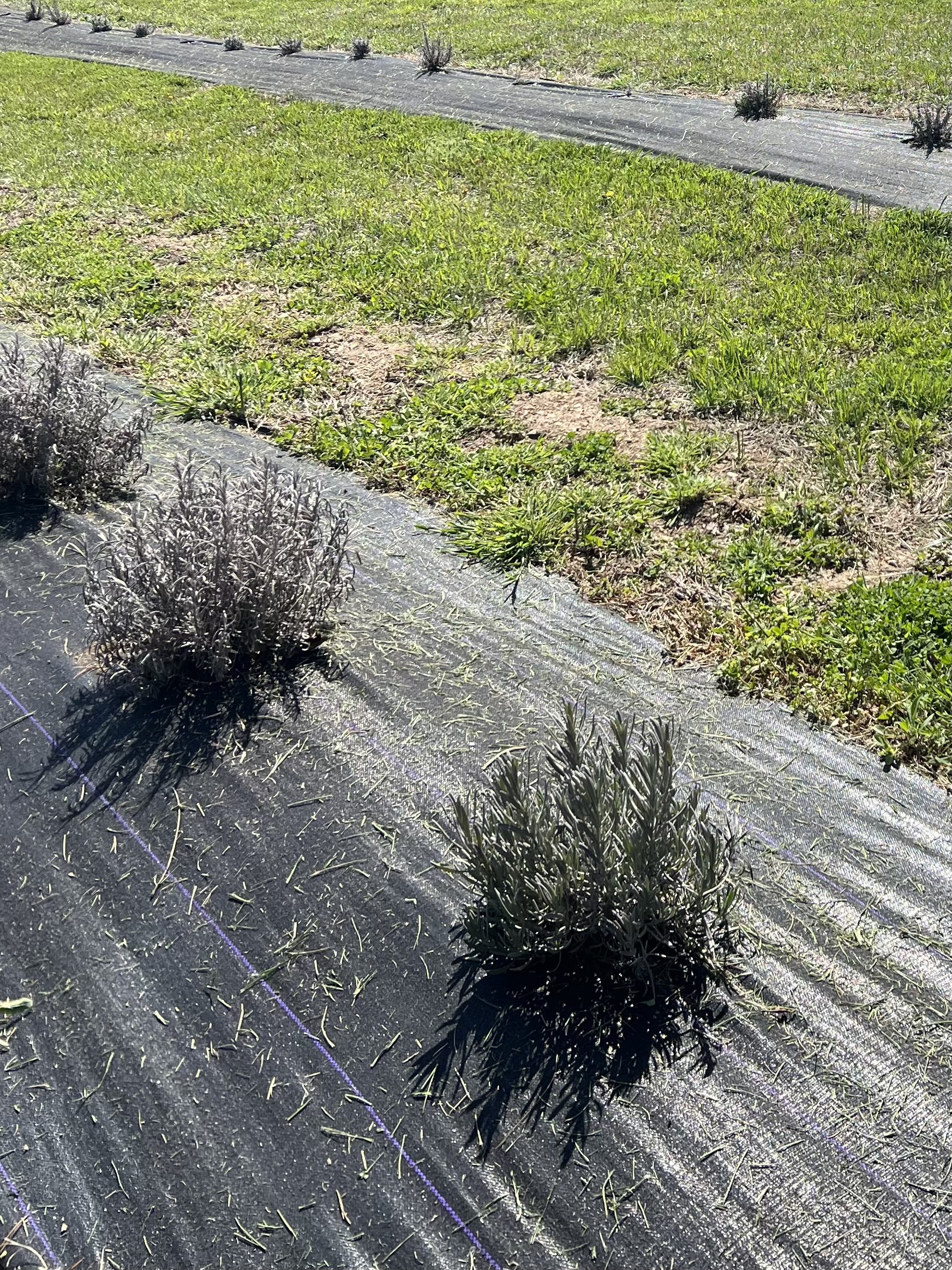Spring Showers but no Lavender Flowers (yet)
I’ve been asked what it’s like to be a lavender farmer in the spring. Spring is busy for our Missouri crop farmers. They know all too well the constant battle with the weather to get the crops planted. Check out our blog if you want to learn more about spring on a new lavender farm.
Spring is a busy time here in Missouri for most farmers. I remember that well as a kid growing up on a soybean and wheat farm. There was always a battle with the weather to get the crops planted between spring storms. I have to say though by comparison to most farming — lavender is a breeze. The tough part so far, albeit less than a year in, was planting 500 plants by hand last summer. Most lavender farmers seem to be planting by hand even with larger farms than ours. I saw a post last summer of a ”machine” someone had made to plant baby lavender plants but by comparison to today’s hi-tech farm equipment it almost looked like something out of the early 1900s with two people sitting on the implement that was being pulled behind a tractor. They were placing a lavender plant every few seconds on a wheel that dug it into the ground. I’m sure, however, I’m not the only lavender farmer that was excited by it! Hey, at least you can sit and ride while planting!
Pruning is a common spring activity for lavender farming. As you can imagine, doing this by hand will be fairly labor intensive. Lavender farmers are wonderful about sharing tips for tools and techniques on the Growers FB pages I follow. I can’t bring myself to prune my plants yet though since they are so small and young. Right or wrong, I’d like to see a bit of green at the bottom first and then will trim off the old dried part.
While the physical work of lavender farming is minimal in the spring compared to traditional Missouri crops, there is one thing we definitely share –— worry! I find most of my energy spent on that right now. Will the plants wake up after our Missouri winter? What will the bloom be like this summer? How labor intensive will harvest be (can I harass my husband and sons enough to help?) How will I replace plants that didn’t make it — buy or propogate replacements? What all do we need to do to have our products ready for market? …… But as a good friend reminds me — these are all “first world problems” and as a former nurse leader she also reminds me too that I’m not taking care of people, so keep it in perspective.
I’ve heard horror stories though of lavender farmers losing their whole crop in a winter. My sense from lots of reading is that there is normally a loss of around 10% in even good years. Fortunately, many of our plants are starting to green up. But there are still whole rows of two varieties that are gray and dry. The picture below shows a difference between two plants of the same variety in the same row. The one on the right is greening up nicely while the left is still silvery gray. But there are a couple of Facebook pages I follow for lavender farmers with many advising to not get worried yet. Some varieties of lavender don’t start to green up until May.
By the way, the missing plants in the next row aren’t from winter loss. My husband and I bickered for a month on the best way to continue the planting process after putting in the first row, so by the time we got them in it was July and 100 degrees. Yes, we probably should change our last name from Wilson to Bickerson!
If you’re curious, look for our next post to learn what planting 500 plants by hand was like and special things we did to try to overcome Missouri’s soil and climate. And there’s a quick link below to subscribe for email notices of blog posts and other lavender happenings!

